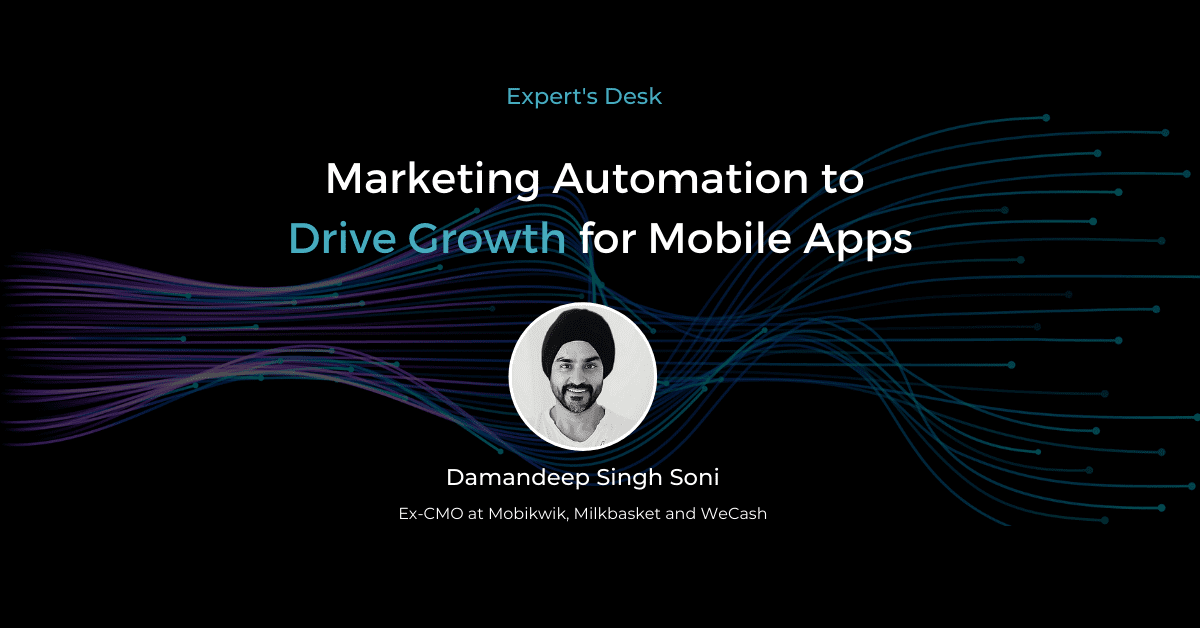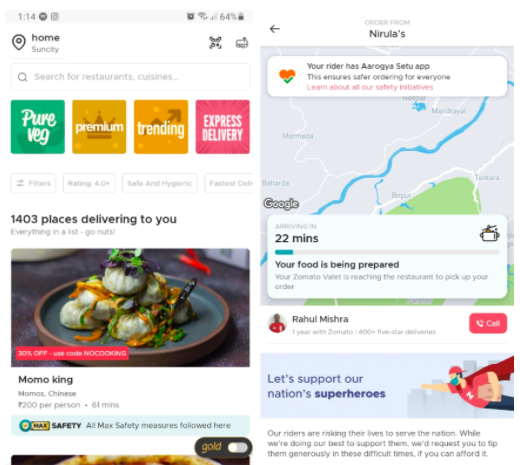How Marketing Automation Can Drive Sustained Growth for Mobile-first Brands

Reading Time: 7 minutes
A considerable number of consumers are skipping desktop or laptop computers and going straight to mobile devices. With consumers spending over 186 minutes a day, mobile-first is no longer an option. They are prepared to reach out to their mobile device whenever they want advice, to communicate, or just seeking a diversion and get connected. Mobile users are better informed, more demanding, and impatient – whether it is to pay rent, order groceries, book a taxi and play games with their friends, consumers expect fast, frictionless, and personalized experiences.
The mobile screen is the primary screen for most millennials and GenZ. Even with earlier generations, mobile has become an integral part of their lives to consume content, transact, and stay connected.
Though consumers have embraced mobile rapidly over the past decade, marketers are still playing catchup. In many verticals like finance and retail, the brick-and-mortar incumbents are still trying to fix their mobile-first strategy. The evolution has been rapid for the startups since they embraced newer platforms and developed nimble processes to leverage the mobile ecosystem.
Marketers will need to work harder to meet consumers where they are
Having a mobile app, a responsive interface, and mobile marketing campaigns are table stakes for a mobile-first strategy. To truly leverage the capabilities of a mobile phone and create a mobile-first strategy, companies will need to put customer experience and customer engagement at the core.
Bonus Content:
|
The connection users have with their mobile devices has radically shifted their purchasing habits, information consumption behavior, and their user journey in purchasing goods and services. Mobile devices can deliver immediate gratification to consumers by giving them instantaneous answers to their search and queries. The exact same is expected when interacting with brands on mobile. For example, users want a continuous feed of news and entertainment from their social media apps. When ordering a cab, users do not want to wait too long.
Consumers now use their mobile devices throughout the customer journey to research product information, compare prices, and hunt for deals. They expect real-time recommendations to assist them in their shopping experience. Post-purchase they also need on-tap access to delivery time and location. Providing a seamless customer experience and customer engagement on the mobile experience is a priority for companies looking to drive growth.
Marketing automation delivering on mobile-first strategy is one of the key trends these days.
Let’s delve a bit deeper into how marketing automation can help deliver on the promises enhancing customer experience and customer engagement to drive growth in a mobile-first environment.
Leveraging data
User targeting today is enabled by using instantaneous Machine Learning by leading adtech platforms. Post acquisitions, marketers can now easily leverage data to provide relevant and contextual experiences to users. Mobile apps can leverage Machine Learning to deliver personalization at scale. This includes not only the UI but also the recommendations and channels through which the users prefer to interact.
Data is the foundation layer for executing marketing automation
The mobile device gives marketing automation engines far more signals to personalize the experience. Mobile is a persistent and always-on environment. Users have their mobile devices with them at all times, enabling marketers to be constantly connected with the user. A constant stream of location data can be accessed to provide relevant stores in the area. Additionally, location data can also be used to provide the delivery personnel’s estimated arrival time. Marketing automation platforms can leverage this data effectively to not only deliver a personalized experience but also manage user expectations.

Zomato used location data for multiple functions in the app.
Today marketers can get access to data in an actionable form. Automation platforms do much of the heavy lifting for data analysis. Platforms give perspectives of flow cohorts and funnels. With customer data platforms providing a 360-degree view of users, the data visualization problems are solved for marketers.
Lending apps use marketing automation platforms to ask for additional information from users in case their credit model is unable to come to a reasonable conclusion with data provided by the user. Due to the fact that the user is constantly reachable via mobile over SMS, notifications, or even an IVR call, marketers are able to nudge users closer towards loan closure much faster than in an offline or desktop environment.
With Machine Learning models rapidly evolving to enable channel and product recommendations, marketers can now easily enable send time optimizations and improve communication channel utilization. Marketing automation platforms are able to easily leverage customer analytics data to not only segment users but also boost sales and conversions by continuously refining the messaging using multivariate testing.
With access to data, marketers can also track key metrics in real-time.
For any given campaign, marketing can easily track key metrics like these easily.
- __% Increase in mobile revenue
- __% Increase in conversion rate
- __% Increase in average order value
- __% Reduction in cart abandonment
- __% Decrease in bounce rate
- __% Increase products browsed
- __% Decrease in checkout time
- __% Increase in order frequency
Campaign optimization now has a much shorter cycle than earlier. Partly due to the data visualization that the platforms provide and partly due to the run time optimizations that platforms can execute without any human intervention.
Engagement and personalization at scale is easy
Companies have underrated the importance of personalization, They have faced challenges in the execution of personalized experiences for users primarily due to lack of technology in the past. With marketing automation has evolved over the past decade, marketers integrate these systems into their stack to leverage data, and deliver an enhanced user experience. Customers can now be engaged across all stages of the lifecycle with over 100 automated campaigns running in parallel.
Mobile lends itself easily to personalization since the user is ever connected and a constant stream of signals can be shared with brands that the users choose to interact with. The personalization journey begins right from the point in time when the brand is trying to build awareness, bring the user to its app, and drive the first transaction.
Marketers have access to data in real-time to segment users and deliver personalized messaging using the medium that the user prefers. The journey on the app can be personalized based on the location data obtained from the device, the channel that the user came in from, and the creative that the user interacted with. Brands that have not leveraged these platforms leave a door open for competitors who can create a personalized experience for each user.
User engagement has also been given importance with automation platforms enabling in-app incentivization and gamification. Rather than developing an entire tech stack to enable in-app event-based incentives, automation platforms can enable this with different modules. Gamification is possible by incorporating real-time notification campaigns to nudge the user to the next level.

Creating multiple campaigns for Flipkart Supercoins can easily be enabled by a well-integrated marketing automation platform. While the heavy lifting is done by the platform, this gives space for the marketing team to focus on creating better campaigns and communications. Coupons and deals can be personalized for users so that the invectives are more relevant and can move them closer to becoming power users.
Orchestration
Companies must deliver a connected and personalized experience that maps the user’s preferences across devices rather than just a series of distinct interactions. Automation without orchestration leads to chaos. The mobile platform lends itself to multiple channels like SMS, in-app notifications, native app banners, popups, chatbots, IVR, paid ads across search, social, and display. If the messaging is not consistent across these channels or the channel campaigns are not in sync, the user is bombarded with multiple notifications and communication in a day. This severely impacts the user experience and even leads to uninstalls and churn. Not only do the mobile channels, but other channels need to be in sync too for a unified customer experience.
A typical e-commerce retailer may want the customer to land on its website or app, sign up as a user, browse through its catalog, and finally transact. The user journey may break during the signup process while executing a transaction or simply during the browsing phase. A well-intentioned marketing team will design campaigns to prevent drop-offs. However, some brands get it wrong when a user gets numerous emails or notifications from these various campaigns in a day. This causes major dissonance and the user can abandon the brand.

Paytm ensures that not more than one emailer is sent to a user per day even with multiple campaigns running in parallel.
Marketing automation platforms help marketing teams not online define global limits for each channel but also enable channel optimization by delivering the communication via a channel that the user prefers. Also, given business goals and users’ probability to interact with a campaign, the communication message can be given priority.
With multiple metrics contributing to the north star metric, various campaigns are configured around, cross-sell, upsell, referral, reducing churn, user win back, and incentivization. Great marketing automation helps run all these campaigns simultaneously in a holistic manner.
Conclusion
By leveraging marketing automation companies can build personalized experiences and orchestrated campaigns for millions of users easily. This in turn builds a loyal user base which can propel the growth of the company. Data is the foundation layer for enabling a marketing automation platform and the mobile platform lends itself to far more signals for marketers than other mediums. With users being connected for over 3 hours a day, marketers can easily connect with users throughout the days using the mobile medium to deliver the campaigns.
Here’s What You Can Read Next |







